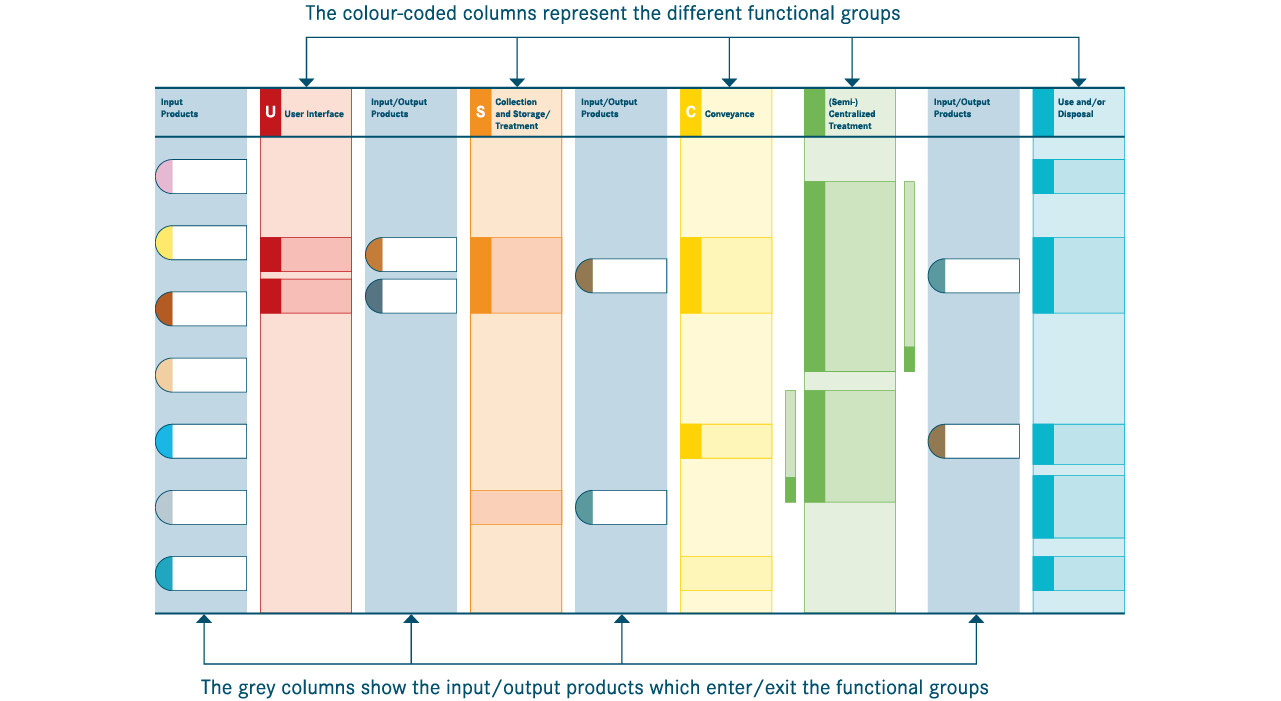A sanitation system can be visualized as a matrix of Functional Groups (columns) and Products (rows) that are linked together where potential combinations exist. Such a graphical presentation gives an overview of the technology components of a system and of all the products that it manages.
Products are successively collected, stored, transported and transformed along different compatible technologies from the five functional groups. The output of a technology in one functional group, thereby, becomes the input for the next.
It is not always necessary for a product to pass through a technology from each of the five functional groups; however, the ordering of the functional groups should usually be maintained regardless of how many of them are included within the sanitation system.
The following figure explains the different columns of a system template.

| 1. Identify the products that are locally generated and/or available (e.g., Anal Cleansing Water, Flushwater or Organics for composting) 2. Identify the system templates that process the defined products 3. For each template, select a technology from each functional group where there is a technology choice presented (box with multiple technologies); the series of technologies make up a system 4. Compare the systems and iteratively change individual technologies or use a different system template based on user priorities, the demand for specific end-products (e.g., Compost), economic constraints, and technical feasibility |
It may be useful to divide the planning zone under consideration into sub-areas so that each one has, within it, similar characteristics and conditions. The procedure can then be followed for each of the separate sub-areas, and any number of systems can be chosen.
A blank system template can be downloaded here. It can be printed and used to sketch site-specific sanitation systems, for example, when discussing different options with experts or stakeholders in a workshop.
A PowerPoint template is also available for download that has pre-defined graphical elements (such as products, technologies and arrows), facilitating the preparation of customized sanitation systems drawings.


